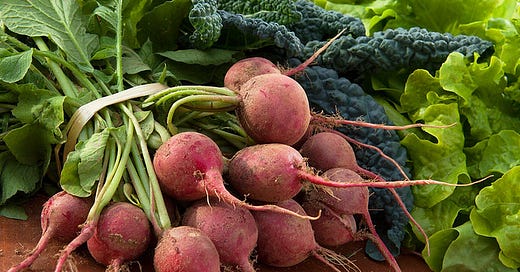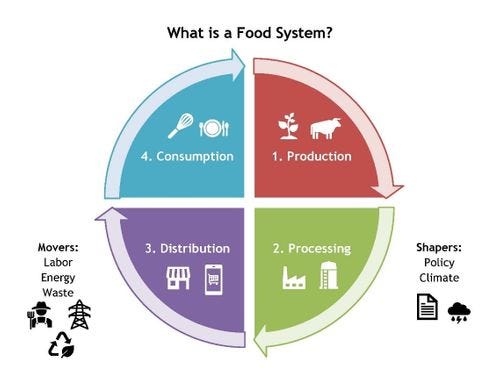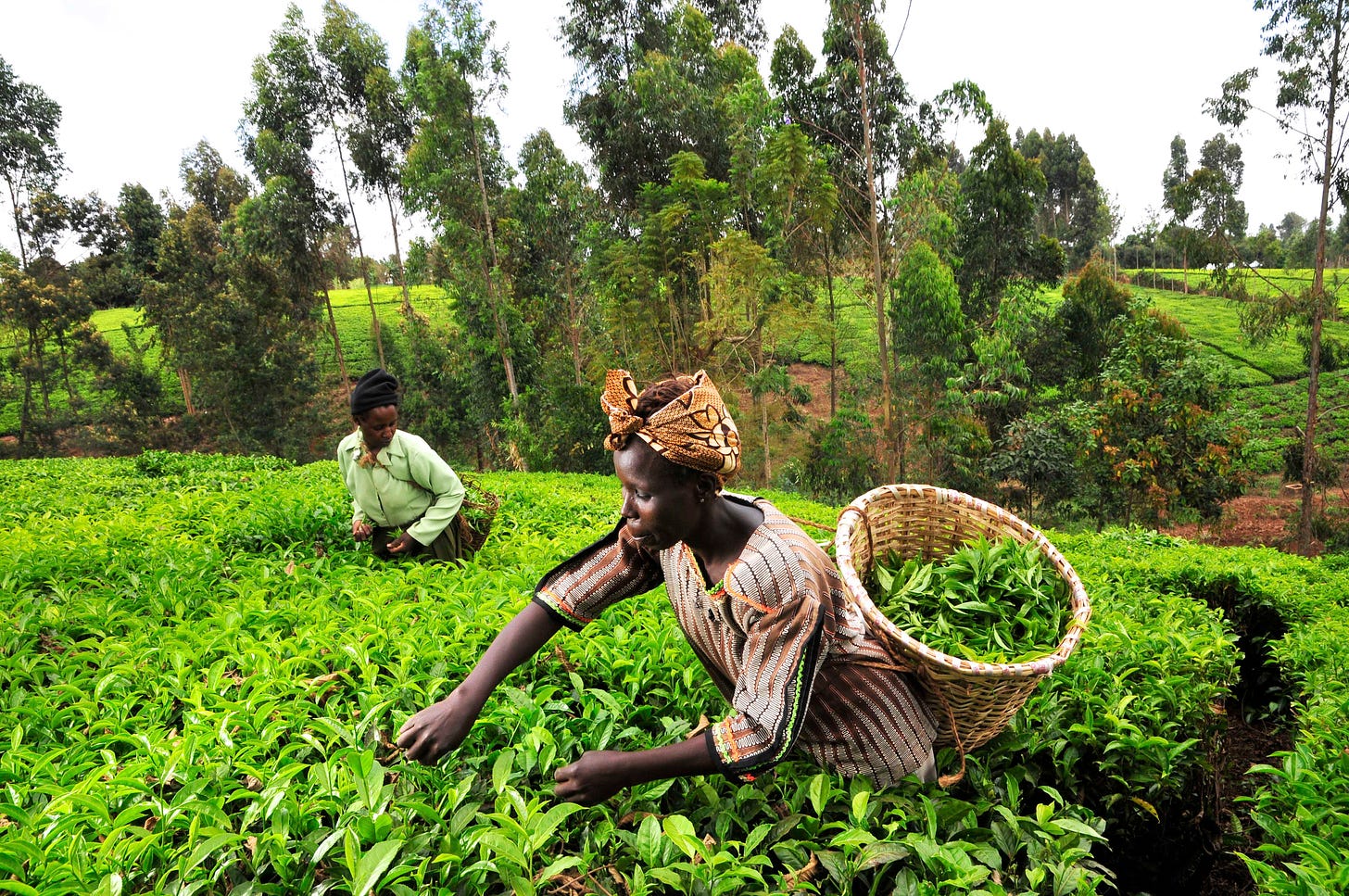The food systems in Kenya are staying at the centre of interest because of two main questions: security of food supplies in the developing world and food safety in the developed countries.
The term food system generally describes a connection of systems and processes that influence nutrition, food, health, and agriculture where in this case, a complex web involves the food system containing production, processing, distribution and consumption.
In a nutshell, the food system does not only involve the basic elements and the process of how we get food from the farms to our dinner plates, but also all of the processes and infrastructure involved in feeding a community at large.
How does the Food System work?
The diagram above illustrates how the food system works. Achieving quality food and proper nutrition security is an international and national goal. Kenya’s Sustainable Development Goals (SDG) intends to end hunger by achieving food security and improved nutrition by promoting sustainable agriculture by 2030.
Given the high numbers of those suffering from malnutrition and malnutrition, Kenya is far from achieving the goal of food security. The Covid-19 pandemic has shown us as a country how vulnerable our food system is. Without proper funding or even consistency, then the food system will likely be failing in a matter of time. According to statistics, small-holder farmers makeup 70% of the farming population and account for 75% of national food production.
How does the Food System operate?
STEP 1: PRODUCTION
This is the first process and the most crucial where if things go wrong then the final results will not be as effective. It is important to gain proper knowledge of how to raise crops, livestock, land, quality and effective tools and equipment among others. Kenya's total annual Food Crop production for 2019 was 10.5 million tons supporting millions of households which is mainly tea, coffee, cut flowers, and vegetables. ("Why Transforming Food Systems is Key to Achieving Sustainable Development", 2021)
STEP 2: PROCESSING
Every food requires processing, storage, and packaging, whether it’s rinsing off freshly pulled tomatoes, vegetables etc and putting them into a box or the multi-step process of transforming maize from the field into a packaged meal in a suitable bag. The government offers equal opportunities for small-scale and large-scale investments in the food processing sector of the economy of Kenya. Some of the processing sectors are milling, milk production, beer production, soft drinks production etc.
Food processing requires a legal verification and inspection for a go-ahead, here in Kenya, the Kenya Bureau of Standards is the government company that ensures food is processed in the right manner, for human consumption and free from chemicals.
STEP 3: DISTRIBUTION
After food production, it is now ready for sale or distribution in sales outlets by marketing its products to potential consumers for purchase and preparation. There are companies that ensure their products are distributed to various outlets to markets and supermarkets. In this distribution process, the processed food gets to those who will prepare it for consumption. There is an almost endless variety of ways to distribute food, both for a fee and for free.
STEP 4: CONSUMPTION
Finally, the food is ready to prepare, knowledge of food preparation techniques, cooking appliances is known well to the individual and comes as a result as ready food in various homes.
There are a lot of interconnected processes when it comes to food systems with all playing an important role towards achieving one goal(getting food to the final consumer), The next time you enjoy a plate of your favourite meal, take a moment to appreciate the process it took the various stakeholders to get it to you.
If you are an entrepreneur wanting to or already revolutionize Food systems, reach out to us and get involved in our upcoming Food System Innovation Program.

Reference:
Why Transforming Food Systems is Key to Achieving Sustainable Development. Kenya. (2021).
Retrieved 7 December 2021, from https://kenya.un.org/en/112599-why-transforming- food-systems-key-achieving-sustainable-development.
burger, m. (2020). What Makes Up a Food System? Breaking it Down into 4 Parts.
Sustainablefoodcenter.org. Retrieved 7 December 2021, from https://sustainablefoodcenter.org/latest/blog/what-makes-up-a-food-system-breaking-it-down-into-4-parts






